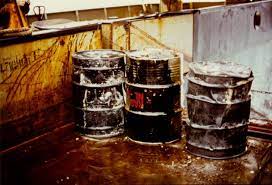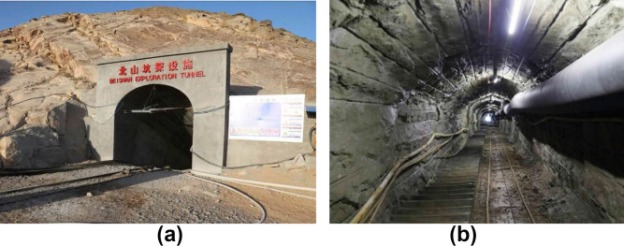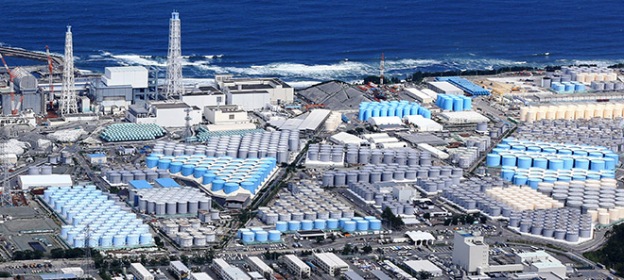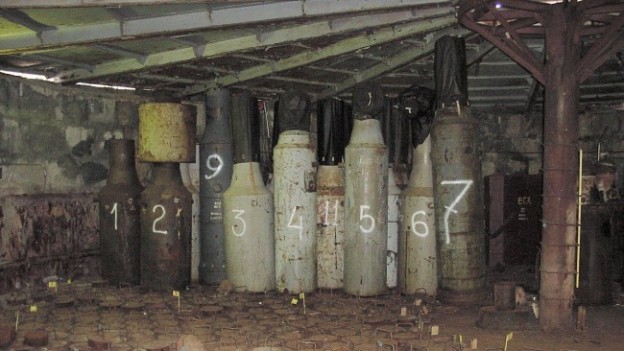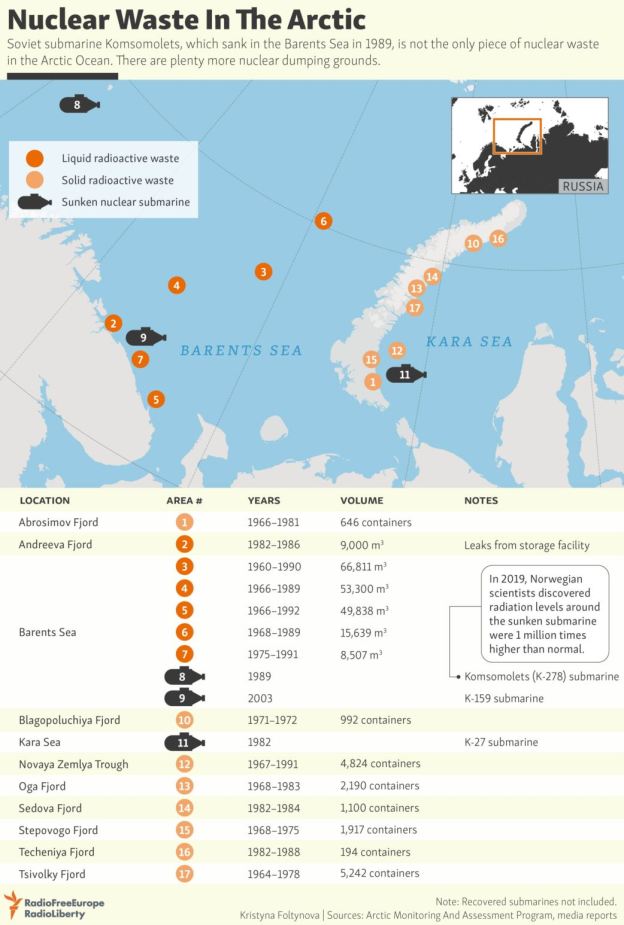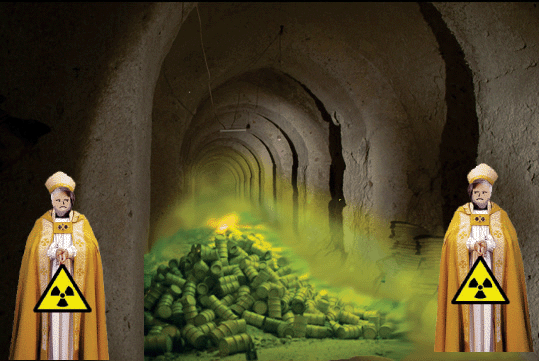 After California regulators refused to allow the U.S. Air Force to label residue from radioactive aircraft instruments as “naturally occurring” – declaring it unsuitable for a Bakersfield-area dump – the military turned to Idaho with the same story. There, military officials met with success. The Air Force is now sending radioactive waste from Sacramento County’s McClellan Air Force Base to a Grand View, Idaho, hazardous waste landfill.
After California regulators refused to allow the U.S. Air Force to label residue from radioactive aircraft instruments as “naturally occurring” – declaring it unsuitable for a Bakersfield-area dump – the military turned to Idaho with the same story. There, military officials met with success. The Air Force is now sending radioactive waste from Sacramento County’s McClellan Air Force Base to a Grand View, Idaho, hazardous waste landfill.
This solution involved a bit of legal semantics rejected in California despite 10 months of Air Force lobbying: The military claimed radium dust left over from glow-in-the-dark aircraft instruments actually was naturally occurring, putting it the same relatively lax regulatory category as mine tailings, according to government memos obtained by California Watch through a public records request. Larry Morgan, a health physicist with the California Department of Public Health, disagreed with that characterization. Radioactive paint does not “meet the definition” of naturally occurring waste, he wrote in a September 2011 memo.
The Idaho facility’s permit allows it to accept materials defined as natural without notifying state regulators, leaving the state’s hazardous waste manager in the dark. “I’m not familiar with this particular waste stream. I intend to find out now that you’ve contacted me,” Robert Bullock, hazardous waste permits manager for the Idaho Department of Environmental Quality, said during an October interview. The redefinition of the waste as natural might not even have been necessary, given Idaho’s different standards for waste containing trace amounts of radium.
Days after the Idaho Department of Environmental Quality told California Watch that the agency was unaware of the Air Force waste, an official went out to inspect the landfill. Interviewed after that visit, engineer Dennis Meier said the dumping was legal because of the low concentration of radium in the soil, despite the source. “It’s not waste that has to go to a radioactive waste facility,” he said. “The concentration is way below what we would accept.”
Nonetheless,California health officials and environmental activists accused the Air Force of bending the truth to get its way. “Illuminated instrument dials do not naturally occur,” said Daniel Hirsch, a lecturer on nuclear policy at UC Santa Cruz who leads the environmental group Committee to Bridge the Gap. “I can’t dig into the soil and discover naturally occurring radium instrument dials.”
The radioactive dirt in question hails from the former McClellan Air Force Base northeast of Sacramento,now a commercial development site.“At least 24 sites” on the base “all have low levels of radium mixed in with the soil, and there are many thousands of cubic yards” of contaminated soil, according to Philip Mook, Western region senior representative for the Air Force Civil Engineer Center, which is in charge of cleanups at Air Force installations. “A little bit of radium goes a long way.” The Air Force has sent 22,000 tons of radioactive dirt from McClellan out of state so far, according to Charlotte Fadipe, a spokeswoman for the California Department of Toxic Substances Control.
According to the federal Environmental Protection Agency, if significant radium is inhaled or ingested, it can increase the risk of diseases such as lymphoma, bone cancer and leukemia. While the concentrations in the McClellan soil are low, they are above limits the federal government has set to protect human health. Before these medical effects became evident, aircraft dials and gauges were painted with glowing radium so pilots could see them better at night. Air Force officials speculate that the radium became dispersed in the soil at McClellan “probably in cleanup water, like mop water or solvents that were used to clean the equipment or to clean up spills of radium,” Mook said. Although radium paint wasn’t used on the base after the 1950s, items contaminated with it remained…
Stephen Woods, chief of the California Department of Public Health’s Division of Food, Drug and Radiation Safety, argued in a Nov. 4, 2011, letter that the dirt should be sent to “a licensed low-level radioactive waste disposal facility.” The Idaho facility where the soil is now going does not meet that criteria. Neither do any California waste disposal facilities. That’s partly because of vocal opposition from local Kern County residents and environmental groups. “Hazardous waste landfills in low-income communities of color in California aren’t the right places for” nuclear waste, said Caroline Farrell, executive director of the Center on Race, Poverty & the Environment, which for almost two decades has fought to limit the Buttonwillow landfill’s expansion and impact on local residents.
But in the past, the landfill has accepted nuclear waste. In 1998 and 1999, the Army Corps of Engineers sent residue from the Manhattan Project, the World War II-era research and development program that produced atomic bombs dropped in Japan, to the landfill. The move outraged civilian officials. Democratic U.S. Sen. Barbara Boxer testified before a Senate committee on July 25, 2000: “When I learned that the Corps had disposed of 2,200 tons of radioactive waste at an unlicensed hazardous waste facility in Buttonwillow, California, I was shocked. The facility sits atop aquifers that supply water to the Central Valley of California.” Since the Manhattan Project controversy, the facility’s permit has been tightened. Yet the landfill’s current permit states that it may accept naturally occurring radioactive materials at low concentrations….
US Ecology, which operates the hazardous waste landfill in Grand View, Idaho, seemed to accept the terminology. Steve Welling, senior vice president of sales and marketing for US Ecology, said in an interview that “state law and our permits” allowed the facility to accept the waste that the Air Force had characterized as naturally occurring.
Katharine Mieszkowski and Matt Smith, Air Force Ships Calif. Radioactive Waste To Idaho Landfill, NBC, Nov. 9, 2012
